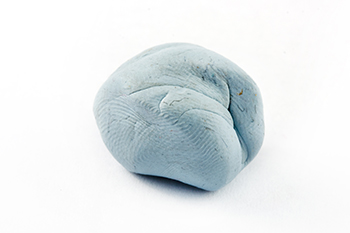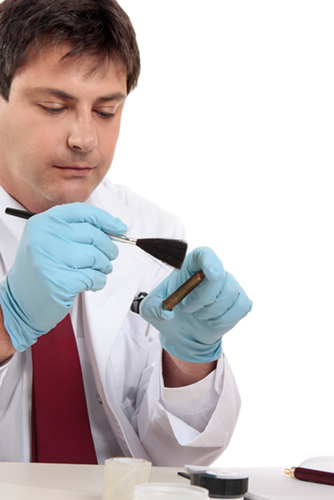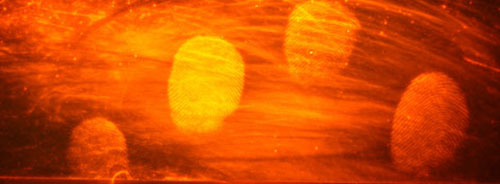Learn
Developing Prints
Prints that are left at a crime scene can be deposited in different ways. Some are visible but others can only be seen through enhancement.
Patent Prints
One type of print is made when the hand has deposits of blood, oil, grease, syrup, or another sticky substance on it before it comes in contact with a surface. These types of prints are called patent prints.

Plastic Prints
Others are made when a finger is placed into a substance such as putty, glue, dust, or butter and a print is left behind. These are called plastic prints and are also visible.

Latent Prints
The most common type of fingerprint is not visible without enhancement and is known as a latent print. If you watch any of the TV CSI shows, you probably have seen them dusting with a brush and powder and a fingerprint appearing. That type of print is called a latent print, and there are many ways to make a latent print visible so photographs can be taken of it.
Let's talk about a couple of techniques used to develop or enhance a fingerprint.

Powders
Powders can be used to make the print visible, and fingerprint powders come in a variety of colors. It is important to use a contrasting color when dusting for prints. For example, if your fingerprint is on a black surface, a black powder will not work well. Instead you may choose to use a white, or bright orange color to dust with.
There are also magnetic fingerprint powders that adhere to a brush like iron filings to a magnet. Both types of powders adhere to the oils in the fingerprint.

Once the powder has been applied and excess powder removed, pictures are taken and the print is lifted using lifting tape. The print is then placed on a fingerprint card and photographed again. The lifted print can then be processed through AFIS and compared to suspects.

Superglue Fuming
One technique that many people are familiar with is superglue fuming or cyanoacrylate. This technique heats up super glue, and the fumes from the superglue adhere to the water and fatty acids (amino acids) from the fingerprint to form a whitish deposit. This whitish deposit is then dusted with powder, photographed, and lifted with tape for examination.
Watch Superglue to Find Fingerprints.
Ninhydrin
Two other techniques used on latent prints are ninhydrin and silver nitrate. Ninhydrin reacts with the amino acids in the print to produce a purple color. Silver nitrate reacts with the chloride from the print to form silver chloride. The silver chloride turns gray when exposed to light so the print can be seen.
Now check out this other fingerprint technique called Mikrosil Fingerprint putty.


